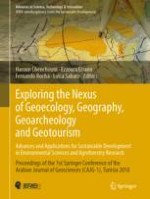2019 | OriginalPaper | Chapter
Why Anthracotheroides had Faced Family Level Extinction: Enamel Hypoplasia an Answer to the Question
Authors : Rana Manzoor Ahmad, Abdul Majid Khan, Amtur Rafeh, Ayesha Iqbal, Ghazala Roohi
Publisher: Springer International Publishing
Activate our intelligent search to find suitable subject content or patents.
Select sections of text to find matching patents with Artificial Intelligence. powered by
Select sections of text to find additional relevant content using AI-assisted search. powered by
